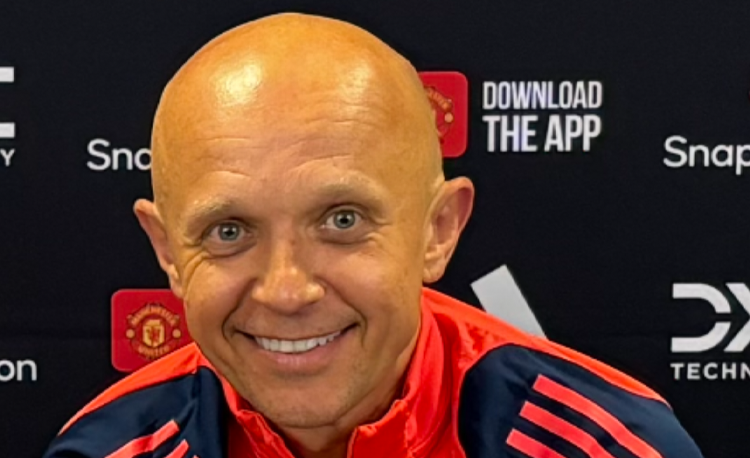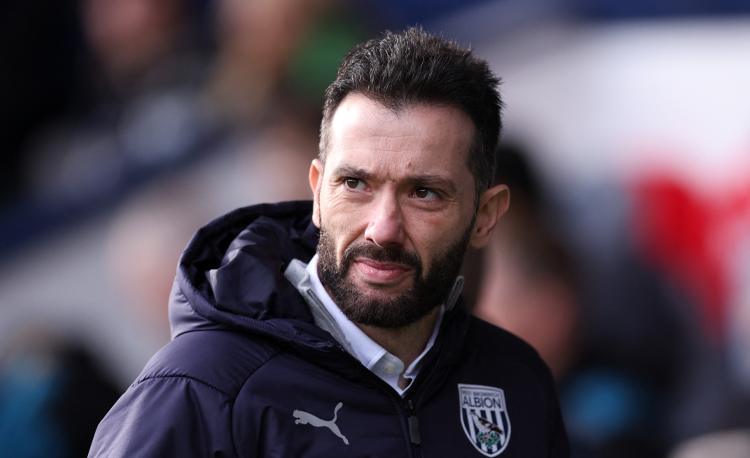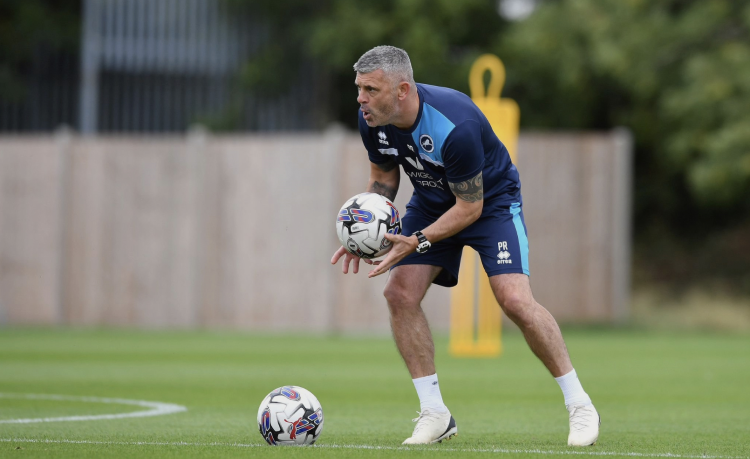You are viewing 1 of your 1 free articles
Crossing and finishing
Create situations where wide players are encouraged to use as many different kinds of crossing technique as possible to set up goal-scoring chances.
| Area | Up to full pitch |
| Equipment | Balls, bibs, cones, 2 full size goal |
| No. of Players | Up to 18 players + 2 goalkeepers |
| Session Time | 8v5 crossing practice: 15mins each, 8v8 + 2 target players: 15mins, 9v9 game: 20mins |
This session is all about finishing from crosses. It creates situations where wide players are encouraged to use as many different kinds of crossing technique as possible to set up goal-scoring chances. Attackers will be able to practise their finishing from early crosses and delayed crosses, near post and far post crosses, and in 1v1 and 2v2 situations.
One of our strengths as a team is getting balls into the box from wide areas and we use this session because it helps us to rehearse these situations with an element of realism. There is also a very competitive edge to this practice.
It’s a high intensity session, which means it is physically demanding. If our match was on a Saturday, we would usually use these activities – or practices with similar objectives – on the Thursday before the game.
What do I get the players to do?
8v5 crossing practice
We set up on two-thirds of a pitch with a goal and a goalkeeper at one end.
A finishing zone is marked out between the six-yard box and the edge of the 18-yard box. We’re using 13 players split into eight attackers (the blues) and five defenders (the reds), lined up to begin the drill as shown [1].
1
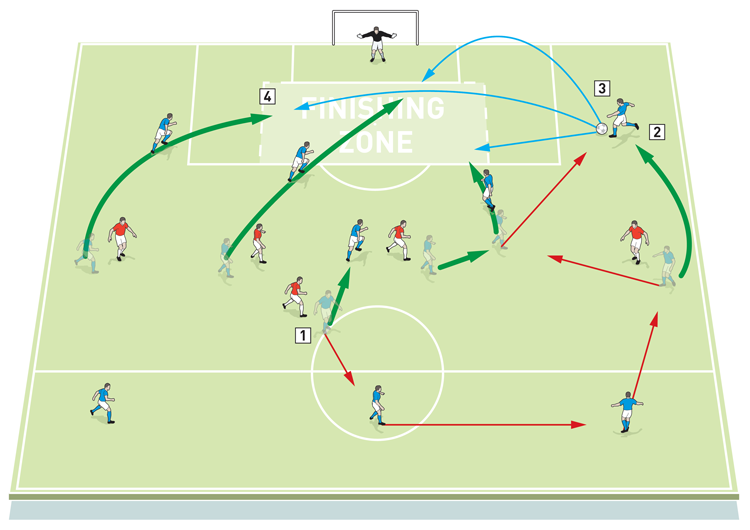
2. The blues use a series of set passes to work the ball to the right-winger. Use the same build-up play in each running of the drill
3. Each time the drill is run, the winger should use a different type of cross
4. The left-winger, the two strikers and the midfielder should make runs towards the finishing zone to try to score from the cross
A blue player starts with the ball near the edge of the centre circle, representing a turnover of possession to the blues in the midfield. He lays the ball back to a team mate and the blues work it up the pitch with a series of specific passes designed to set up the right-winger with the ball. As the right-winger prepares to cross, the other winger, the midfielder who started play, and the two strikers all make forward runs into the finishing zone to meet the ball. The defending team should mark these attackers man for man as they make their forward runs.
Once the shot has been taken, players reset to the same starting positions and should repeat the drill. It follows the same pattern each time, but the right-winger should use different crossing techniques to get the ball into the finishing zone. Techniques used should include low driven crosses, chips and pullbacks.
Run the practice on the right-hand side of the pitch for 15 minutes and then set up for the same drill on the other side of the pitch. This time play goes down the left, with the players linking up to set the left winger free to cross into the finishing zone, as shown [2].
2
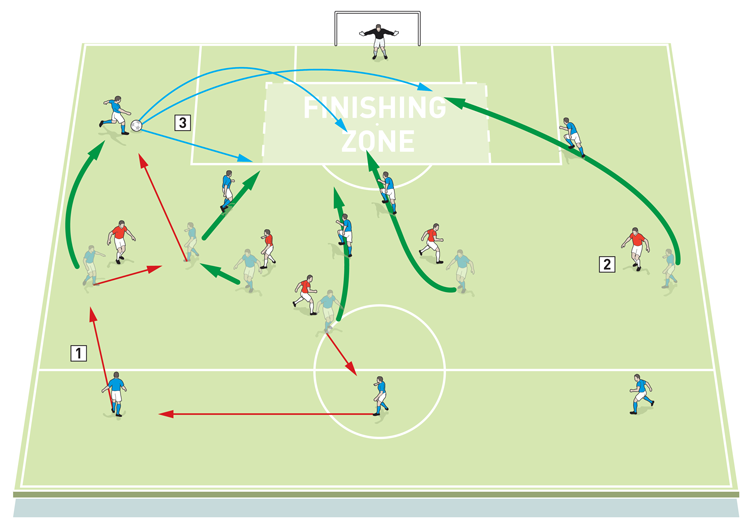
2. The red defenders should mark the attackers man for man
3. Make sure the winger varies the cross each time, trying low driven crosses, high back post crosses, chips and pullbacks
How do I progress the session?
8v8 + 2 target players
The next phase of this practice is to play an 8v8, with the attacking team freed from the passing restraints of the previous drill and now having more freedom to create crossing situations. Their team mates also now have more flexibility to follow up and finish.
We set up on two-thirds of a pitch, with a full-size goal and a goalkeeper at one end, as shown [3]. We’re using 18 outfield players, divided into an attacking team of eight (the blues) and a defending team of eight (the reds), plus two red target players who are positioned over the halfway line. If the defending team wins the ball, they can link up to pass it to a target players, but they must make three passes before they can do this. If the defenders lose possession before getting it to a target player, the practice stays live.
3

2. The attacking players should make runs towards the penalty area to meet the cross
3. If the red team wins the ball they should try to get it to one of the two red target players over the halfway line, but they must make three passes before they can do this
How would you put this into a game situation?
9v9 game
For the final phase of the practice, we increase the playing area. Using the full width of the pitch we set up between the penalty boxes, with a goal and a goalkeeper at each end, as shown [4]. We’re using 18 outfield players, split into two teams of nine.
4
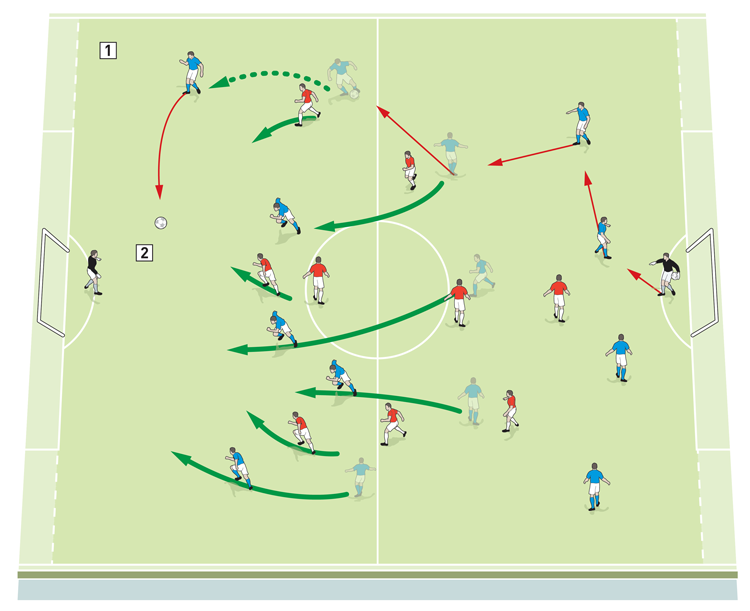
2. Coach the wide players to use many different crossing techniques: deep, near post, early, delayed, chipped, driven, curled, or pulled back
Play a normal 9v9 game, but encourage players to use what they’ve learnt from the session by keeping count of how many goals each team can score from crosses during the game.
What are the key things to look out for?
We are looking for players to use a good first touch, the correct weight of pass, and an array of passing styles. We also want to see players using the best body shape to receive the ball.
The most vital thing to the success of the session is that the wide players use all kinds of different crossing techniques: hitting the ball deep or to the near post, playing the ball early or delaying the cross, chipping the ball, driving it in low, curling it in or pulling the ball back.
We also want to see different kinds of finish employed: passing into the net, power shots, full volleys, half volleys, shots with the inside and outside of the foot, and headers. Above all, attackers should demonstrate a competitive and committed attitude and deliver a positive finish to the cross.
What are the typical mistakes players might make and how do I avoid them?
Players can sometimes lack the commitment to finish if faced with particularly physical defending. We want to see a commitment to finish in and around six-yard box, with players making positive runs to get to the near post. To get the best out of players, we challenge them with individual objectives and feedback during and after the session.
Related Files
Editor's Picks
Using the goalkeeper in build-up play
Pressing principles
Intensive boxes drill with goals
Penetrating the final third
Creating and finishing
My philosophy
Pressing initiation
Compact team movement
Defensive organisation
Coaches' Testimonials

Alan Pardew

Arsène Wenger

Brendan Rodgers

Carlos Carvalhal

José Mourinho

Jürgen Klopp

Pep Guardiola

Roy Hodgson

Sir Alex Ferguson

Steven Gerrard
Coaches' Testimonials

Gerald Kearney, Downtown Las Vegas Soccer Club

Paul Butler, Florida, USA

Rick Shields, Springboro, USA

Tony Green, Pierrefonds Titans, Quebec, Canada
Join the world's leading coaches and managers and discover for yourself one of the best kept secrets in coaching. No other training tool on the planet is written or read by the calibre of names you’ll find in Elite Soccer.
In a recent survey 92% of subscribers said Elite Soccer makes them more confident, 89% said it makes them a more effective coach and 91% said it makes them more inspired.
Get Monthly Inspiration
All the latest techniques and approaches
Since 2010 Elite Soccer has given subscribers exclusive insight into the training ground practices of the world’s best coaches. Published in partnership with the League Managers Association we have unparalleled access to the leading lights in the English leagues, as well as a host of international managers.
Elite Soccer exclusively features sessions written by the coaches themselves. There are no observed sessions and no sessions “in the style of”, just first-hand advice delivered direct to you from the coach.





